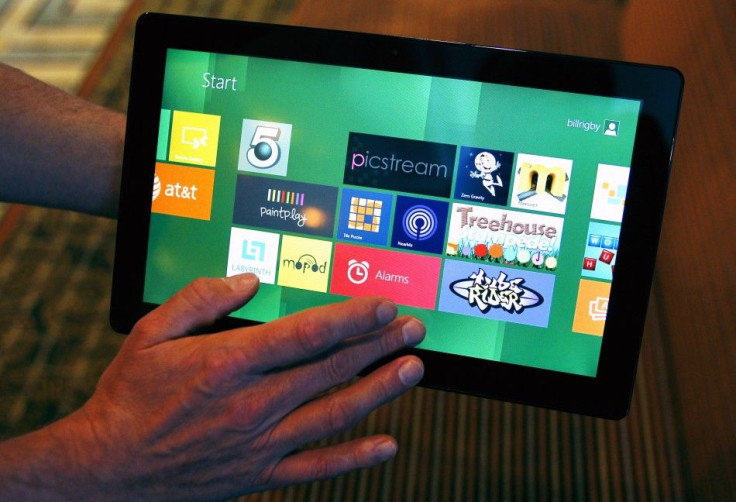Windows 8 Tablet vs iPad 2: 'User Experience is Fundamentally Different' [VIDEO]

Microsoft Wednesday unveiled the Windows 8 Customer Preview during a side event to the Mobile World Congress at the Hotel Miramar in Barcelona and will reportedly be pushing out tablets running on the latest operating system soon.
Microsoft is probably using the term Customer Preview to tell people in a fancy way that Windows 8 is still in the beta stage and is not all set to go for public consumption as of now.
However, despite some bugs in the pre-release version, the Windows 8 Customer Preview has reportedly been downloaded for more than one million times in the first day of its availability.
One day later...one million downloads of the consumer preview, Microsoft tweeted.
In total, the downloads tally for day one was up to over three and a half petabytes of data (about 41GB per second), according to The Verge.
The publication, previously known as This is my next, has made a comparison video by pitting Windows 8 on a tablet up against the Apple iPad 2, the incumbent leader in the tablet space Microsoft is seeking to become a player in.
After almost ten and a half minutes of comparison, the folks at The Verge had made the conclusion that both Windows 8 and iOS 5 share some similarities, but the user experience is fundamentally different and informed by different interaction metaphors.
Watch the video below that shows multitasking on Windows 8, adding an account in mail, the Internet Explorer browser, scrolling, pinch and zoom, and the like.
According to Microsoft Windows division president Steven Sinofsky, Windows 8 is a bold reimagining of the platform. The upcoming OS was a complete overhaul without compromise starting from the chip level to the user interface (UI), he added.
Highly evocative of the UI for Windows Phone 7, the new Metro interface is subdivided into blocks or Live Tiles, as Microsoft calls them.
The touch interactive tiles display immediate data from email services, social networking sites, instant messaging apps and other information sources. In addition, the multi-monitor support built in allows the new Metro UI to operate on one monitor while the basic Windows desktop UI shows on another.
Windows 8 will incorporate a new task manager in which applications will be listed independently from background processes, allowing users to view statistics, such as CPU usage, memory usage and performance for both apps and processes.
Control Panel is also modified in Widows 8 with a sensitive interface that lists categories down the left side and options for those categories on the right. Users can personalize the Lock Screen, manage users and toggle notifications for different apps.
Adding to the traditional x86 chips from Intel and AMD, Windows 8 will also run on ARM-based processors. Thanks to their low-power, connected computing, ARM processors like Nvidia's Tegra, Qualcomm's Snapdragon and TI's OMAP have dominated both the smartphone and tablet industry.
With the rise of Apple's iOS App Store, a wave of app store obsession has been developed across the user base. Given that, inclusion of an app store in the upcoming Windows 8 OS shouldn't be big surprise. However, it does give Microsoft a solid support in its rivalry against Apple.
The app store creates a kind of incentive for developers to build Metro-style apps. Users will have the availability of both Win32 apps and Metro apps for Windows 8 via Windows Store.
Windows 8 will ship with native support for NFC (Near Field Communications). The company has demonstrated the usage of NFC on its Windows 8 tablet at the Build conference.
The demonstration showed that using an NFC-enabled business card, users can easily collect the Web site address from it by simply pointing the corner of the tablet toward the card and tapping the notification.
MUST READ: Windows 8: Top 5 Things Users Must Know About the Next-Gen Windows OS
MUST READ: Windows 8: Is Microsoft's Latest OS a Threat for Android Tablets and iPad?
© Copyright IBTimes 2024. All rights reserved.






















